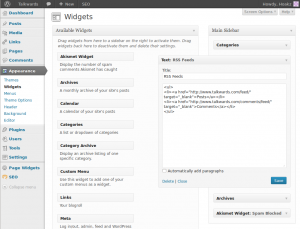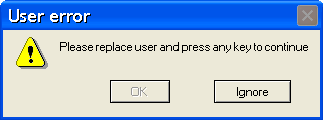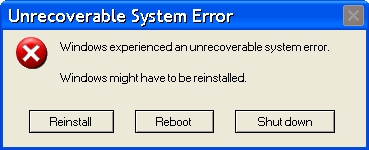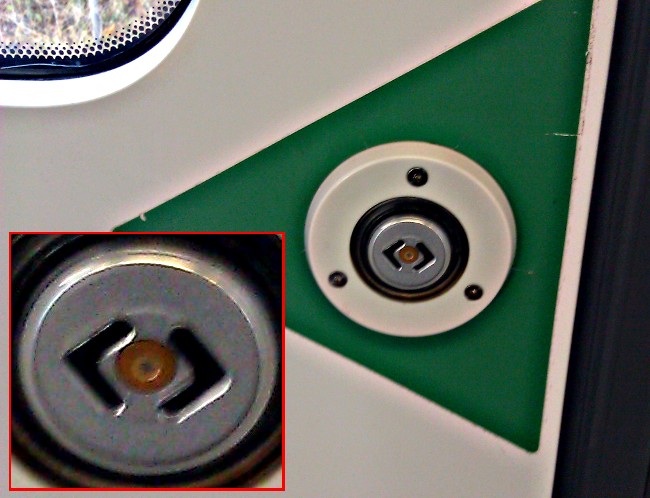That Dracula is a most shady person – I think he has arterior motives!
Yearly Archives: 2013
At the end of the day…
At the end of the day I appreciate honesty, although I have to warn you, we’re not really at the end of the day just yet…
On Communication: When the other person isn’t there
When the other person isn’t there, sometimes we tend to make up their side of the conversation, which truly isn’t fair to either one of you…
/Pretty Little Liars
Rambaldi in Commuter Train Business?
In Stockholm, where I live, we have commuter trains from somewhere in Europe (I think in-fact they are from Italy).
The trains have buttons that can be pressed to open the doors. On the inside and outside. These buttons, if one can even call them buttons since they neither have the “push-in” feeling of a button, nor look pretty pushable… in fact I believe my old design teacher at my university would say they have a low affordance for being pushed.
Although, being an avid fan of the TV series Alias, I have another view on these buttons as well…
Now, that looks pretty much exactly like the symbol used by the renaissance genius and inventor Rambaldi from the TV series Alias.
Given that Swedish authorities have failed numerous times to teach us Swedes to push those buttons to open the doors to the trains without them having to open every door (especially advantageous when there’s low traffic in the summers or winters)… perhaps the buttons were never meant to be pushed? Perhaps they are the part of a sinister design to awake Rambaldi, or give some evil mastermind eternal life? Maybe that’s why so many people have a hard time pushing them? They’ve seen Alias and knows what happens to some of Rambaldi’s less fortunate Guinea pigs… ;o)
For those of you who do not know who Rambaldi is, check out wikipedia: http://en.wikipedia.org/wiki/Milo_Rambaldi
WordPress RSS Feeds: Create Your Own Links
I decided, after some “experiences” to add a blog post about adding a link to the WordPress RSS feed of your site.
I may be missing something, or may not have come across the right plug-in or something else, however, I was unable to add RSS to my site. Either I got my feeds full with garbage and (I think) advertising from the plug-in author, or the simple little itsy-bitsy tiny RSS feed plug-in managed to make all my “Edit” buttons and links unreachable in edit mode (like when you wish to change the Publish date or the post slug).
Now there is a built in WordPress RSS feed widget, however it imports some one else’s RSS feeds while I want to have a link on my page that exports my RSS feeds. And, no, using the built in plug-in on your own site does not seem to make anything else than a list of links to your posts.
Either someone forgot to explain RSS feeds to the WordPress coders or, as I said before, I may not understand it.
Anyhow, I finally did it myself instead.
This is how I did it:
- Add a Text Widget to your theme’s widget area
- Put some HTML into the Widget
- Check out WordPress’s RSS Codex page
1. Add a Text Widget to your theme’s widget area

You do this via “Appearance > Widgets” from the admin menu in WordPress.
The exact name of the widget is simply “Text”. It comes built-in with WordPress.
I used the text “RSS Feeds” as Title.
2. Put some HTML in the Widget
Here are two variants, one for the twenty eleven theme and one for the twenty twelve. The only difference is that the twenty eleven looks better as a list. This text goes into the larger text field of the widget.
Twenty eleven:
<ul> <li><a href="http://YOURSITENAME/feed/" target="_blank">Posts</a></li> <li><a href="http://YOURSITENAME/comments/feed/" target="_blank">Comments</a></li> </ul>
Twenty twelve:
<a href="http://YOURSITENAME/feed/" target="_blank">Posts</a> <br/> <a href="http://YOURSITENAME/comments/feed/" target="_blank">Comments</a>
Replace YOURSITENAME with the name of your site (e.g. www.example.com).
The ”target=”_blank”” section of the “a href”-link ensures that the link is opened in a new window.
3. Check out the WordPress RSS Feed Codex page
http://codex.wordpress.org/WordPress_Feeds
The codex page contains some more links, for instance to posts in categories and tags.
It may also be good to check that page to see that the links used here are still correct.
If you want to try other links simply replace the URL in the href=”URL“ part of the a-tags above.
Improvisation Freeze Stuns Grand Central Station
When working with theater there are a number of different improvisation or acting exercises you can perform. The freeze is especially useful in improvised drama exercises.
I was once part of an exercise where half the group was parents and the other half was children. The whole exercise went on for a while and there was once sequence where we got to see the kids’ teacher being a nazi. As a group we decided to storm the classroom and … well I guess we weren’t going to lynch the teacher but before that situation came to its edge the exercise leader yelled FREEZE!!!
And we did. Although, not for as long as these guys does it.
Watch as improvised drama stuns Grand Central Station!
Lord Hoakz of Chaol Ghleann
Should I take the deal? Think about it! Becoming a real Scottish Lord!
Lord Hoakz of Chaol Ghleann!
Mmmm. Wow! Of course, it would cost me £24 per square feet! So it’d most likely be something like “Lord Hoakz of square foot 12789 of Chaol Ghleann”… (If you happen to be a lady or lord of that particular square foot, I can only apologize! It was an example! Let me know and I’ll change it to something else…)
The Chaol Ghleann in the Scottish Highland is selling of titles a square foot at a time. Apparently the initiative is to fund a restoration after a fire.
It seems the title is as real as it can be, and it seems it is legal as well. So much so the title is inherited by children (uh, or the eldest, mmm son?)
Anyhow, they have several different deals, even family deals with neighboring square feet (good for blood feuds!), but what strikes me the most is the “Electric Lord” package. Makes me think of some sex toy, but apparently it’s for last minute shopping…
Ah, well! Gone are the times when one had to chop off a couple of heads to get a title without inheriting it from daddy…
I guess, in the long run though, it’s for the best?
Hey! I can see a future for a “title market” where square feet are sold and bought. There should even be room for options and funds, maybe even A- and B- type squares! Wow! A competition to the Bitcoin! Indeed! But so much more inspired! If you ask me!
watch – Linux command
The Linux watch command is a nifty little tool that can be used when you want to keep the result of a command under constant watch.
Here’s a sample for watching the /proc/mdstat file.
watch -n1 cat /proc/mdstat
The “-n1“-switch tells watch to refresh every “1” second (“-n2” would consequently mean, “refresh every 2 seconds” and so on).
The “cat /proc/mdstat” is the command to keep an eye on. “/proc/mdstat” is a process file that displays the state of md-raid drives in the system.
Press “ctrl-C” to stop the running command.
This is an example of “watching” the free memory:
watch -n1 free -m
If you add the “-d” switch, watch will mark differences between the runs.
watch -d -n1 free -m
And with the “-d=cumulative” switch the differences will be marked cumulatively between runs:
watch -d=cumulative -n1 free -m
You may also watch for directory changes:
watch -d ls -l
If you do not specify a watch interval (using “-n“) the default is set to 2 seconds.
For more info, see the manual pages for the watch command.
For watching files see the related “tail” command.
The perfect melody
I can’t really put my finger on it, but I’ve noticed in the songs I like there is something in the melody that just has to be right. Some form of melodic conclusion that has to be reached or the music will likely leave me feeling like you feel when you’re about the sneeze and the it just never happens. I guess the word I’m looking for is “unfulfilled.”
Alihan Samedov’s Sen Gelmez Oldun is one such song. In fact the oboe like instrument does exactly the kind of melodic trip it has to do in order to become just perfect! I simply love that melody!
Enjoy!
http://www.youtube.com/watch?v=oJQE0xdYw80
PEBCAK and other ways to blame the user…
 In IT-support jargon the expression “PEBCAK” (meaning “Problem Exists Between Chair and Keyboard”) is used to blame the user of the system for any computer related problems they are experiencing while using said system – since they are located “between the chair and the keyboard” in most usual situations…
In IT-support jargon the expression “PEBCAK” (meaning “Problem Exists Between Chair and Keyboard”) is used to blame the user of the system for any computer related problems they are experiencing while using said system – since they are located “between the chair and the keyboard” in most usual situations…
PEBCAK can be found long before the program reaches the end user
I had a fun thought about the expression PEBCAK. Given my many years in IT development I have observed two things:
- Few programmers write their programs without sitting on a chair in front of a keyboard…
- PEBCAK is just as likely to start way before the software reaches the end user.
 If you think the Project Cartoon is a gross exaggeration (you are probably an ordinary, unsuspecting computer user, and a victim :P…) I have to inform you, it’s not… The sad truth is that programmers have never been in control of systems, and even the most stable and dependable systems have flaws.
If you think the Project Cartoon is a gross exaggeration (you are probably an ordinary, unsuspecting computer user, and a victim :P…) I have to inform you, it’s not… The sad truth is that programmers have never been in control of systems, and even the most stable and dependable systems have flaws.
Even NASA has PEBCAK
Did you know that up until 2007 the space shuttles never flew missions over the new year… why? Because their computer systems, programmed in the 70ies, had no stable support for year changes…
Searching to find my source on the above statement only produces two slashdot articles with links to, now non-existing, articles on CNN and Reuters. (Although I just came across this fact a couple of months ago, so either the conspiracy is recent, or my Googling skills are decreasing…) Anyway, here’s the slashdot links:
- NASA Avoids “Happy New Year” On Shuttle
- Computer Date Glitch May Limit Next Shuttle Launch
- There’s a quote from one of them here
- And the forum post “NASA Computers? Happy New Year – NOT!!!” goes into it in some detail. It in turn quotes an article in “Florida Today” from Nov 7, 2006, titled “Glitch may force NASA to launch shuttle early; Dec. 6 slotted for Discovery”
I’m not going to search for pacemaker system errors or similar, but I can guess the mitigating circumstances are that you’re not in space when the problem occurs and might actually get into the hospital in time…
If you like to read more about programmer initiated system errors (and errors initiated by IT projects) you should check out The Daily WTF.

